
The Narwhal’s in-depth environmental reporting earns 11 national award nominations
From disappearing ice roads to reappearing buffalo, our stories explained the wonder and challenges of...
It’s become a running joke in Canada’s capital city: come rain or snow, the Ottawa Light Rail Transit (LRT) system won’t run smoothly — or at all.
The $2.1-billion, 13-station light-rail line was meant to solve issues of traffic congestion and overcrowded buses on Ottawa’s streets. It was meant to showcase the efficacy of tri-level intergovernmental funding agreements and public private partnerships. As a bonus, it would also demonstrate how transit can serve as a huge emissions-reduction measure for a city.
But since it launched in September 2019, the Ottawa LRT has been off the rails — both figuratively and literally.
Construction was dogged by major problems, including two huge sinkholes and a tunnel collapse that trapped three workers. The city and the construction companies it hired are now suing each other over a series of problems that range from trains not working in extreme weather, both cold and heat, to multiple derailments, to delays and closures that have left riders disappointed and angry.
There’s been very little transparency or accountability from public officials throughout the decade-long saga. But this month marks the start of a provincial inquiry into the entire project — from the process of choosing the companies to build it to ongoing disruptions — led by the Ottawa Light Rail Transit Commission. Public hearings will run from June 13 to July 8, 2022, and 41 witnesses are scheduled to speak. A final report will be submitted to the Ontario Minister of Transportation on or before August 31 — maybe.
The Ottawa LRT debacle is a complicated, chaotic story about the tension between politics and public transit in Ontario and Canada, and the opaque public-private relationships such projects involve. Here’s what you need to know.
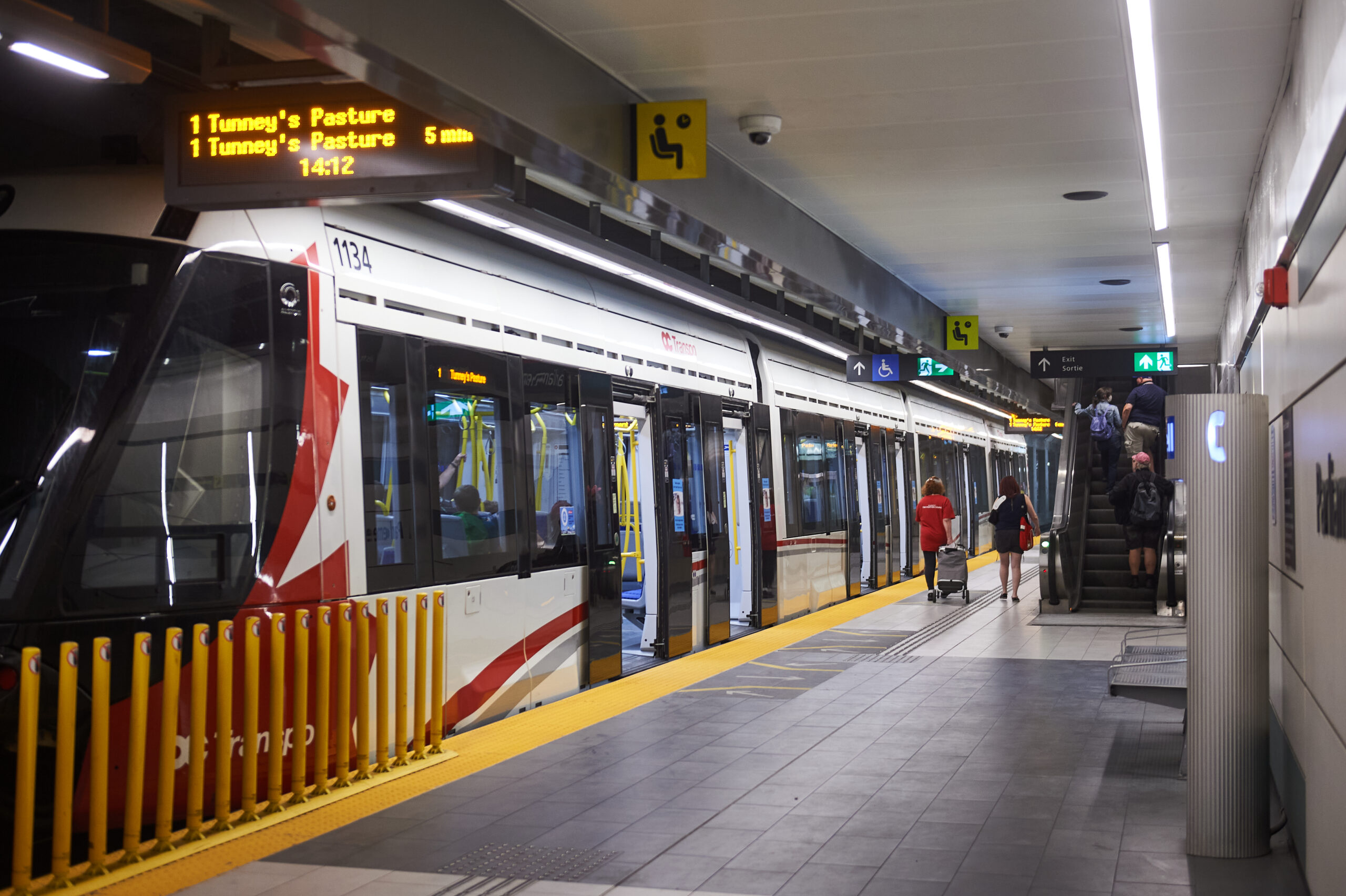
Transportation is one of the largest sources of carbon pollution in Canada. Better public transit could significantly help the country meet its international commitments to slash the emissions that are causing the planet to heat up.
The freshly re-elected Doug Ford government has pledged to honour its transit projects, which include the Ottawa LRT. The question for riders and residents is how to ensure these projects are built efficiently and well. While each city needs its own specific transit solutions, all big transit projects tend to be subjected to a complicated bureaucratic process that sees huge sums of money committed by three levels of government to private companies, often with very little transparency. The Ottawa LRT public inquiry is mandated to shed more light on that process and share recommendations on how to improve it.
In 2014, Ontario’s auditor general said the system of scoring proposals put forward by companies wanting to take part in public-private partnerships, like the ones that build transit, “places more weight on a low bid than on technical merits.” It essentially gives the lowest-cost proposal “a decided edge.”
But is a cheaper transit project really that beneficial if it is plagued with problems that make it useless for riders — and wind up costing much more down the road? This inquiry may offer some thoughts. Certainly, the transit riders of Ottawa will welcome a chance to share their own.
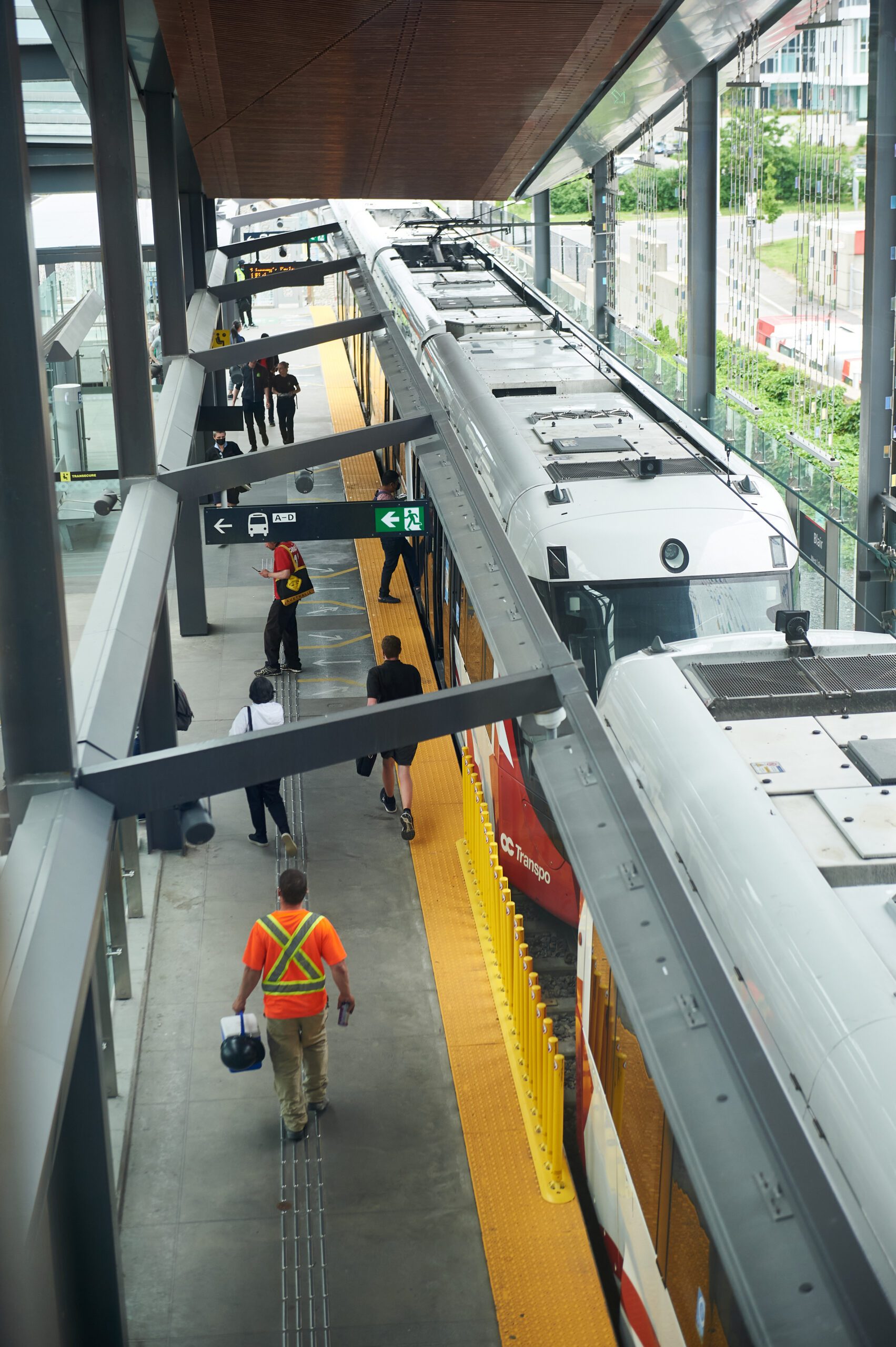
In December 2012, Rideau Transit Group — a consortium of companies including ACS Infrastructure Canada, EllisDon and SNC Lavalin — was awarded a $2.1 billion contract to build the LRT line. The consortium won the bid primarily for its low-cost proposal, and agreed to maintain the LRT for 30 years after it opened. At the time, this contract was called the “deal of the year.”
That same month, Ottawa City Council unanimously approved the first stage of construction: a 12.5-kilometre east-west transit line to replace the city’s rapid bus lane system, known as the Transitway, where the volume of buses had become unsustainable. The new LRT line would transport over nine million passengers annually across 13 new stations, three of which would be in 2.5-kilometre-long tunnels.
This line was the first step in Ottawa’s Transportation Master Plan, which proposed more than 40 kilometres of new light rail over the next two decades. This includes a 30-kilometre north-south line and a 12-kilometre extension of the east-west line.
Construction on the first stage began in April 2013 and the east-west line was supposed to be up and running by 2018.
Like most mega transit projects in Canada, this one was jointly funded by the federal government, the provincial government and the municipality, in this case the City of Ottawa.
The first stage of construction in 2014 was funded in part by $600 million from the federal and Ontario governments. The City of Ottawa allocated up to $161.5 million of its federal gas tax transfers and $287 million of provincial gas tax transfers to the project. The remainder came from development charge revenues — fees collected from developers to help pay for the cost of providing municipal services, such as transit, water and emergency services, to new development — and transit reserves.
During construction.
In February 2014, a sinkhole opened during the construction of a tunnel on Waller Street, the planned site for Rideau Station. Rideau Transit Group found the cause to be an old construction pit that hadn’t been spotted during testing. Another huge sinkhole opened in June 2016 at Rideau Street and Sussex Street, one of Ottawa’s busiest intersections, after the construction disrupted the roadway: a van fell in, a gas leak occurred, businesses were evacuated. The two streets were closed for six months and construction was delayed.
Notably, the city didn’t hire an independent investigator to find the root causes of these sinkholes. Instead, it chose to ask experts from Rideau Transit Group to examine what happened.
In November 2016, three workers with subcontractor Hardrock Construction were trapped in the downtown tunnel after a section collapsed. All three were rescued with minimal injuries.
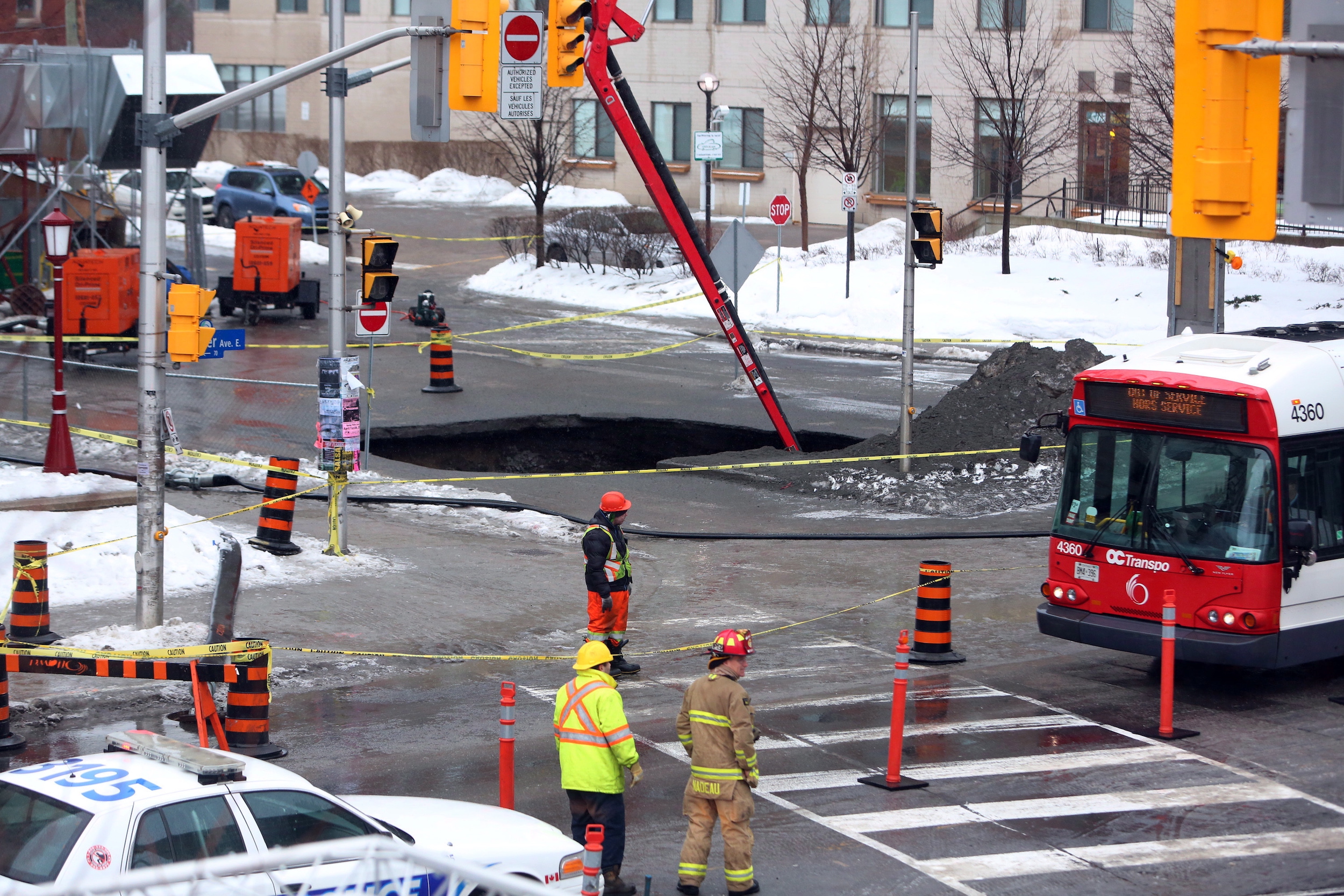
Nope. It opened 456 days late with a myriad of issues.
Rideau Transit Group was meant to hand the line over to the city for inspection by May 2018. The consortium told the city this deadline was “risky” and said the line would be ready for inspection in November 2018 — six months after the original deadline.
Contractually, the city had the right to impose a $1-million fine for this missed deadline. At that point, no penalty was imposed.
Then Rideau Transit Group missed the postponed deadline and two subsequent deadlines, incurring $2 million in penalties. It was penalized once more in August 2019 for missing a deadline again because it couldn’t complete the city’s safety benchmark: 12 consecutive days of testing without issues.
The delays weren’t just due to construction issues. That same August, the city’s then-head of transportation, John Manconi, wrote to the Rideau Transit Group that “things are not going well … The vehicles require attention more often than they should.” The public wouldn’t learn about this until late 2021, after CBC News obtained Manconi’s letter through access to information legislation.
The rail line opened on September 14, 2019 with just 12 days of testing. These days were not consecutive.
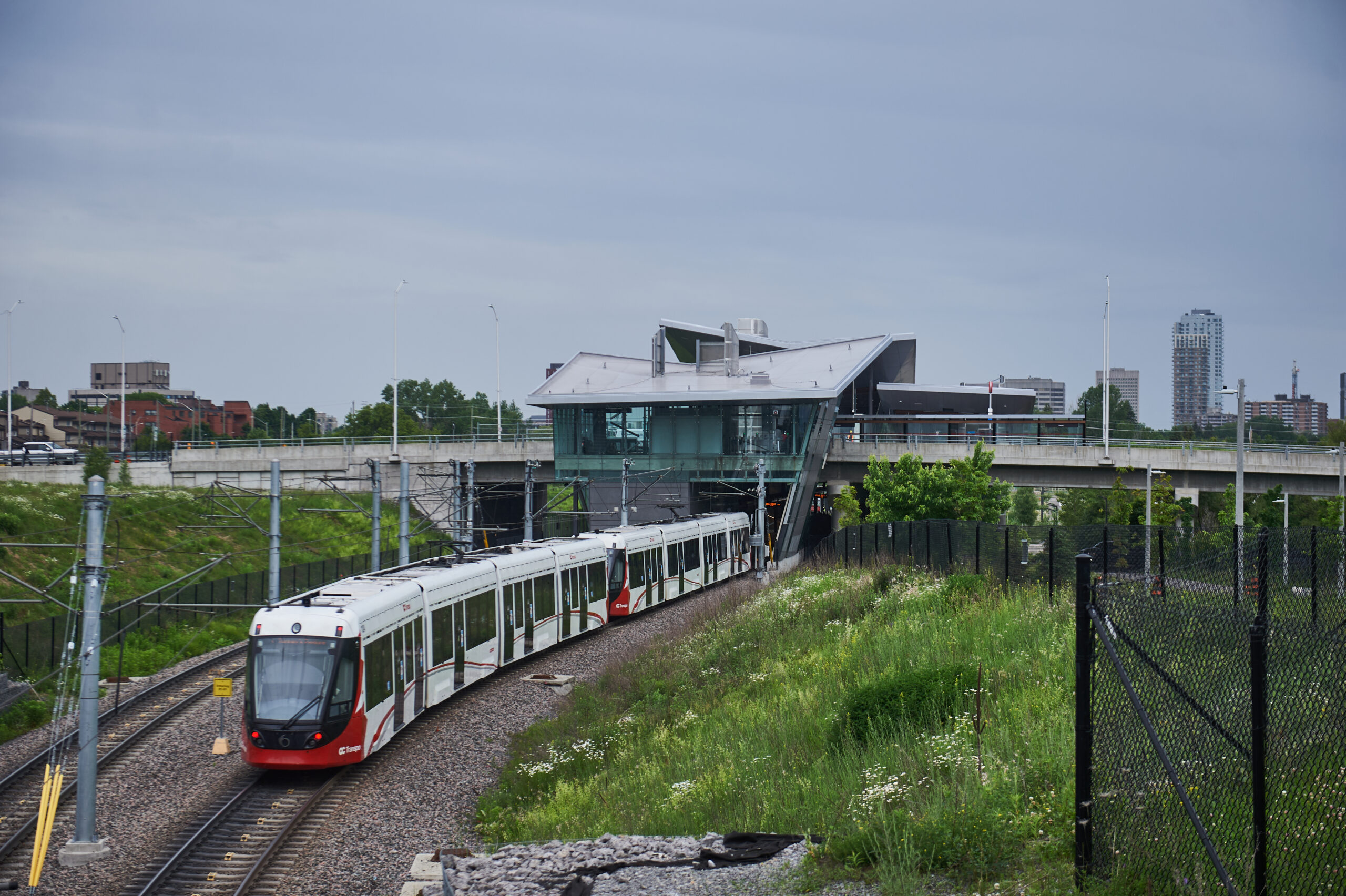
No, and city officials knew that was likely before it opened.
In February 2019, a report by city inspectors “expressed concern on the effectiveness of switch heaters to prevent ice and snow from building up and immobilizing the switch points and switch rods.” The inspectors also found issues with heaters on the main line.
The trains that had been bought for the line were designed by Alstom Canada specifically for North American winters, but had never been used before. In March 2019, CBC News obtained a series of internal reports that showed parts of the train froze or broke in the cold. One report from February 2019 said the “vehicles are currently unreliable to the point that it has not been demonstrated that operations can be sustained during a winter weather event.”
In April 2020, a city report revealed the trains were tested for winter reliability in a laboratory simulation rather than real-world conditions.

Transit users were disappointed and frustrated. Chaos ensued.
To start, there were only 13 trains on the line instead of the promised 15. Poorly aligned bus routes made for longer wait times between the connections. This all made commuters late and resulted in overcrowded platforms. Door faults also shut trains down for up to an hour, forcing Ottawa mayor Jim Watson to instruct city staff to “solve this damn door issue once and for all” during a meeting. At the time, the train computers were also failing repeatedly.
There were 12 consecutive days of delays in October 2019, a month after opening. Around 40 buses were put back on the road to help relieve LRT congestion and a three-month fare freeze was put in place to appease transit users.
In 2021, a local distress centre started promoting their services specifically for LRT users. Even Watson said that riding the multi-billion dollar LRT was an “awful experience.”
In January 2020, four months after the LRT started running, the entire system went down for 18 hours after an electrical wire broke and fell on the tracks. That same month, five trains were pulled out of service because their wheels were “not perfectly round.” No other explanation was provided by the city. Cracked wheels were also discovered on other trains months later. The cause: protruding screws. All wheels on all trains were ordered to be replaced; this took over a year to accomplish.
In February 2020, debris on the tracks — later identified to be a part of another train — took six trains out of service. That same month, six trains failed during rush hour. By this point, there were only seven functional trains, down from the promised 15.
All of this happened in just the first six months of the LRT’s operations.

Three months in, two downtown Ottawa stations were overcome with the smell of sewage. The construction team had learned of a sewer puncture during an inspection in August 2019 but didn’t inform the public until November — yet another setback on a very long list of mishaps the public was not told about.
Even though the sewer was repaired, the smell persisted for a while.
Yup, this happened twice in six weeks.
In August 2021, a train carrying no passengers derailed after its axle came off on the track. The incident put the whole LRT system out of service for a week. An investigation by Rideau Transit Group found 10 other trains had the same issue and would need repairs.
In September 2021, another train derailed after a wheel broke off. No one was injured. All trains were taken out of service for 54 days while the cause was investigated.
A report released in November 2021 found the cause of the September issue to be “inconsistent and incomplete maintenance following the August derailment:” the first train was inadequately repaired and caused a serious accident a mere five days after its release.

Depends on who you ask.
Ottawa’s transit union, Amalgamated Transit Union 279, blames “the city’s continued use of public-private partnerships that place profit ahead of safety” — a sentiment shared by many. Mayor Watson has repeatedly defended the city’s choice as being “good value for taxpayers.” But Ottawa is now suing Rideau Transit Group, and Watson has decided not to run for re-election this fall.
Just as the pandemic began, the City of Ottawa issued a formal notice of default to Rideau Transit Group in an attempt to break its $2.1-billion contract, which gives the consortium the responsibility to maintain the LRT line for another 27 years. The company was given until March 31, 2020 to fix all the problems.
That same month, Rideau Transit Group released a statement criticizing the city for this statement, calling it “an inexplicable decision to release a self-serving letter.” The consortium said the city hadn’t paid it at all since the line opened.
The city had in fact withheld $59 million in construction payments, to cover the costs of the delay in opening. In its statement, the consortium said the delays were because of the city’s “acts and omissions.”
The city filed a second notice of default last fall, at which point Ottawa’s rail construction director told council the consortium had failed to meet its responsibilities to create and maintain a safe and efficient LRT line.
Ottawa’s notices of default are just two of the lawsuits pending in the wake of the LRT debacle.
The city is also suing its own insurers for $361 million in costs associated with the 2016 sinkhole. The Rideau Transit Group is suing the city for $230 million for the same sinkhole; the city is counter suing.
Meanwhile, several businesses impacted by construction issues are suing both the consortium and the city. One hotel sued both $100,000 for costs incurred because of the sinkhole evacuation. Many other businesses joined this lawsuit later.
Several subcontractors filed lawsuits worth roughly $33 million against the consortium for missed payments and costs incurred from the delays. The employer of the three workers who were trapped in the tunnel is also suing the consortium for negligence and costs incurred from delays. That suit is for $12.8 million.

In October 2021, city councillor Catherine McKenney proposed a judicial inquiry into the LRT. Council didn’t vote on the motion, instead moving to have the city auditor, Nathalie Gougeon, investigate the contract with Rideau Transit Group. There were limitations to that investigation: the city auditor would not be able to hold public hearings and wouldn’t be able to investigate the mayor or council members who were decision-makers throughout the saga.
McKenney filed their motion again in November; it was defeated.
In November 2021, the Ford government announced a public inquiry into the LRT saga, and that it would hold back $1.2 billion in provincial funding for the expansion until the inquiry is complete. Before the announcement, Watson wrote a five-page letter to then-transportation minister Caroline Mulroney asking for “a fair opportunity” to brief her on the city’s “due diligence work” before she called for an inquiry. Mulroney chose to call an inquiry without speaking to him.
The province appointed Justice William Hourigan, a judge who specializes in commercial litigation, to head the inquiry now called Ottawa Light Rail Transit Commission. The mandate is to investigate what led to the breakdowns and derailments, as well as the city’s oversight of the project and its adherence to safety standards.
In advance of the inquiry, the Commission has already gathered over a million documents, of which 10,000 were deemed relevant, and interviewed 90 witnesses, 41 of whom will testify during the public hearings that begin June 13. The list includes everyone from Watson and former transportation general manager Manconi to executives of Rideau Transit Group and city officials that were part of the 2012 contract negotiations.
The city auditor paused her investigation so as to not duplicate the inquiry’s work. A report is expected in late August, though the inquiry has an option to extend that deadline till November if needed.
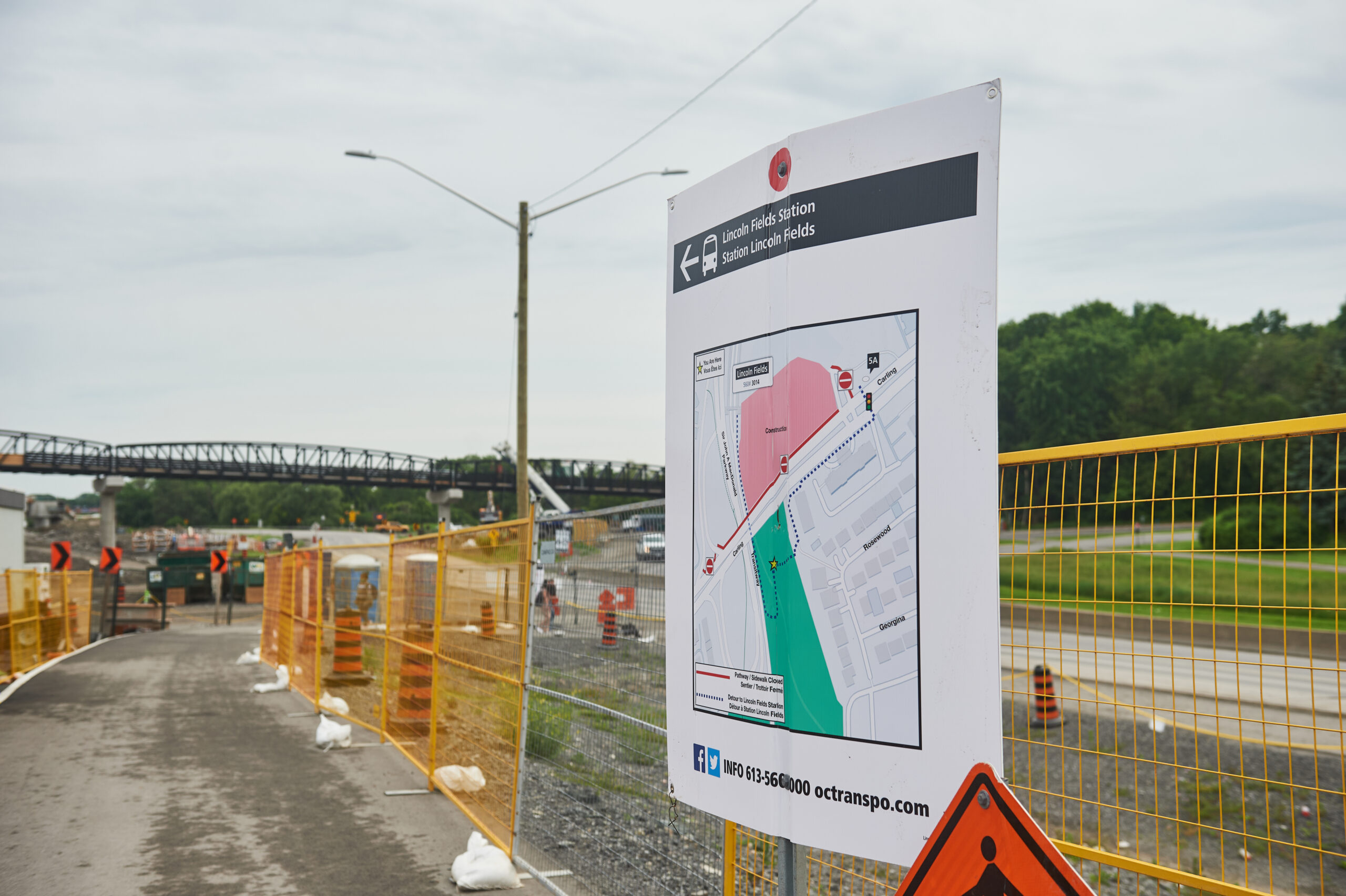
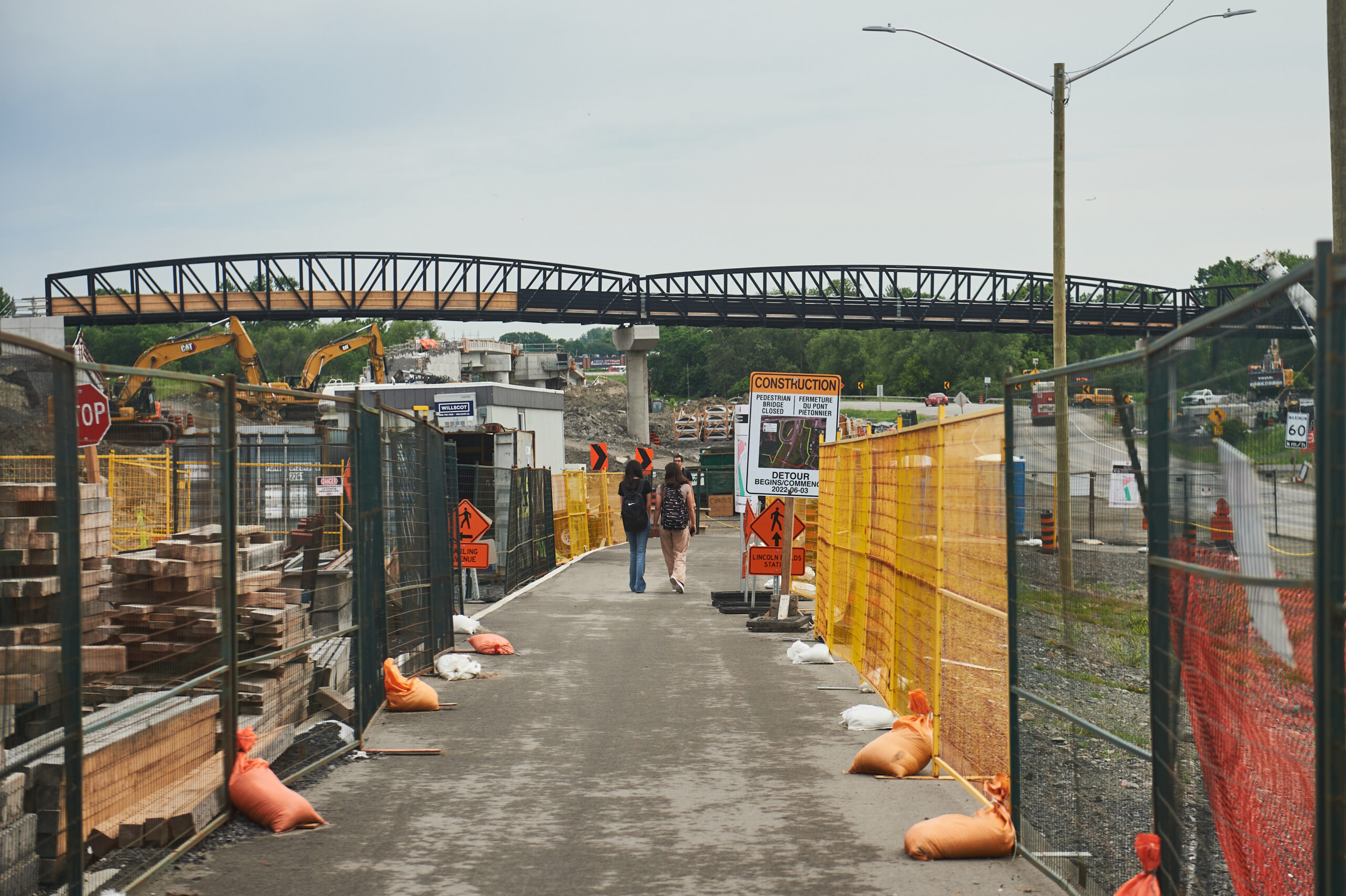
In March 2019, Ottawa City Council voted in favour of a $4.66-billion expansion of the LRT that would add 24 new stations around the city. The vote was rushed because the bids from companies wanting to to build the extension were expiring. Councillors complained about not having enough time to read all the reports.
“Today for the first time, I’m going to be making a decision without having all the facts or being able to describe to residents exactly what the implications of my decision are,” Councillor Jeff Leiper said at the time. He still voted for the expansion, which awarded the building to some of the same companies that are part of the Rideau Transit Group.
And it doesn’t look like the city has learned from its mistakes: documents that have been made public show the new consortium of companies chosen for Stage 2 of construction, which will expand the east-west LRT line, do not have the technical capabilities to execute it. SNC Lavalin, for example, failed to achieve the required technical score for this stage but offered the lowest cost.
The construction of the north-south line is already facing a nine-month delay.
Updated June 11, 2022, at 4:26 p.m. ET: This article was updated to correct the spelling of the name of construction company EllisDon.
Get the inside scoop on The Narwhal’s environment and climate reporting by signing up for our free newsletter. On a warm September evening nearly 15...
Continue reading
From disappearing ice roads to reappearing buffalo, our stories explained the wonder and challenges of...

Sitting at the crossroads of journalism and code, we’ve found our perfect match: someone who...

The Protecting Ontario by Unleashing Our Economy Act exempts industry from provincial regulations — putting...
